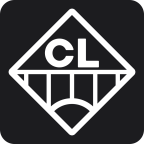Choosing between pulse laser cleaning and continuous wave (CW) laser cleaning is a key challenge when selecting laser cleaning equipment. These two technologies each have their own advantages and are suitable for different scenarios. To assist you in making informed decisions, this guide will provide a detailed analysis of the core differences, advantages, and ideal application scenarios between the two.

Here is the conclusion., selecting the right laser cleaning machine depends on the specific application. For high-precision tasks that require minimal substrate damage, such as aerospace components, electronics, and cultural heritage restoration, pulsed laser cleaning machines are ideal. For larger steel structures, pipelines, and robust industrial applications where heat dissipation is key and substrate damage is less critical, CW laser cleaning machines are more suitable, providing efficient cleaning for extensive surfaces.
What is Pulsed Laser Cleaning?
Pulsed laser cleaning involves emitting laser pulses at high peak power for a short duration. These intense bursts of energy effectively remove contaminants like rust, paint, and dirt from surfaces without damaging the underlying material. Pulsed lasers are known for their precision and control.
The following is some typical applications for your reference and better understanding.
Aerospace Components: Cleaning sensitive parts without causing thermal damage.
Electronics: Removing oxides and residues from delicate components.
Cultural Heritage: Restoring artifacts and artworks with precision and care.
What is CW Laser Cleaning?
Continuous wave (CW) laser cleaning operates by emitting a continuous, steady laser beam. This method is often used for applications requiring uniform cleaning over larger areas. CW lasers provide consistent energy output, making them ideal for removing thicker layers of contaminants.
Here are some example for your checking.
Large Steel Structures: Efficiently cleaning rust and coatings from extensive surfaces.
Pipelines: Removing contaminants from pipeline exteriors.
Shipbuilding: Cleaning large metal parts and structures without the need for precision.
Key Differences Between Pulsed and CW Laser Cleaning
1. Power and Precision
Pulsed Lasers: Offer high peak power in short bursts, allowing for precise removal of thin layers of material without affecting the base material.
CW Lasers: Provide a steady stream of energy, which is suitable for removing thicker or more stubborn contaminants over a larger area.
2. Heat Generation
Pulsed Lasers: Generate less heat, reducing the risk of thermal damage to sensitive surfaces.
CW Lasers: Generate more heat due to the continuous energy output, which can be beneficial for certain applications but may pose a risk of thermal damage to delicate surfaces.
3. Application Versatility
Pulsed Lasers: Ideal for applications requiring high precision, such as electronics, art restoration, and delicate parts cleaning.
CW Lasers: Best suited for industrial applications where the removal of thick, uniform layers of contaminants is needed.
Advantages of Pulsed Laser Cleaning
Precision: Pulsed lasers can precisely target and remove thin layers of contaminants, making them perfect for delicate or detailed work.
Low Thermal Impact: The short bursts of energy minimize heat buildup, reducing the risk of damaging sensitive materials.
Versatility: Suitable for a wide range of applications, from cleaning metal surfaces to removing coatings and oxides.
Advantages of CW Laser Cleaning
Consistency: Provides a continuous, even cleaning effect over larger areas, making it ideal for industrial applications.
Efficiency: Capable of removing thicker layers of contaminants in a shorter amount of time compared to pulsed lasers.
Cost-Effectiveness: Often more economical for large-scale cleaning projects due to the continuous operation.
Ideal Use Cases
Pulsed Laser Cleaning
Electronics Industry: Removing oxides and contaminants from sensitive components.
Art Restoration: Cleaning delicate and valuable artifacts without causing damage.
Precision Engineering: Removing thin layers of rust or paint from intricate parts.
CW Laser Cleaning
Automotive Industry: Removing paint and rust from car bodies and parts.
Manufacturing: Cleaning large metal surfaces and equipment.
Shipbuilding: Maintaining and cleaning the hulls of ships.








